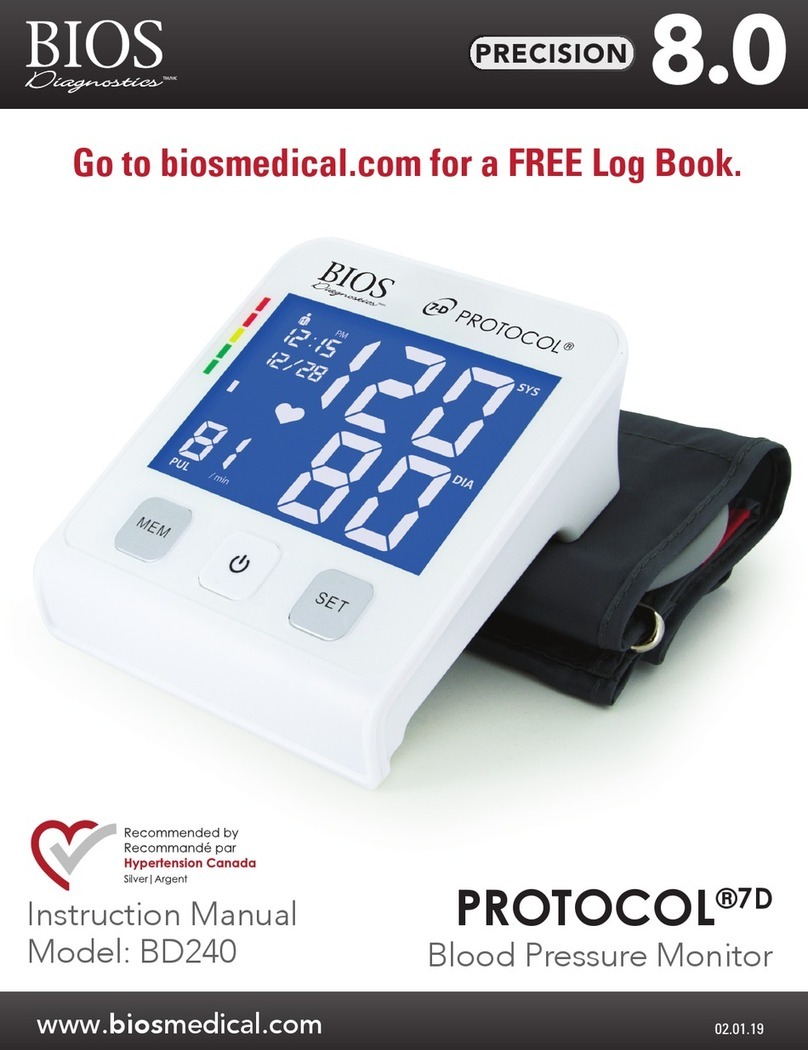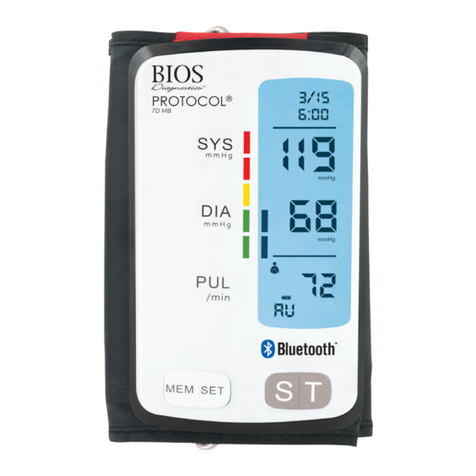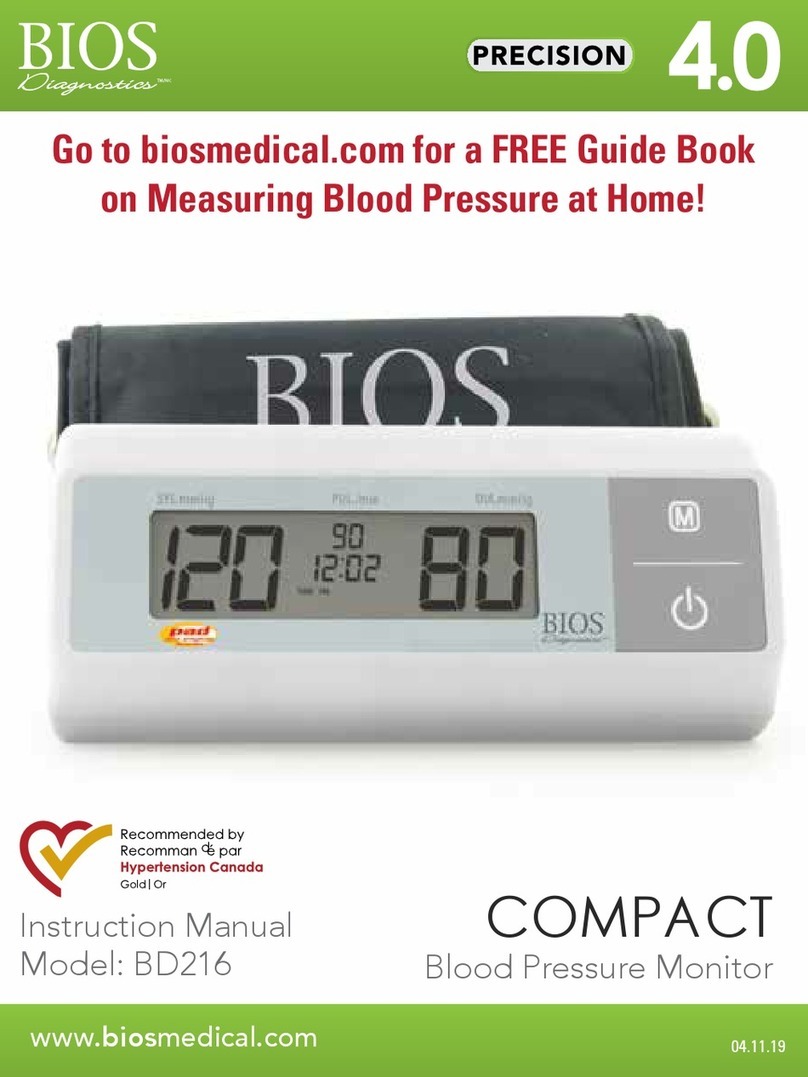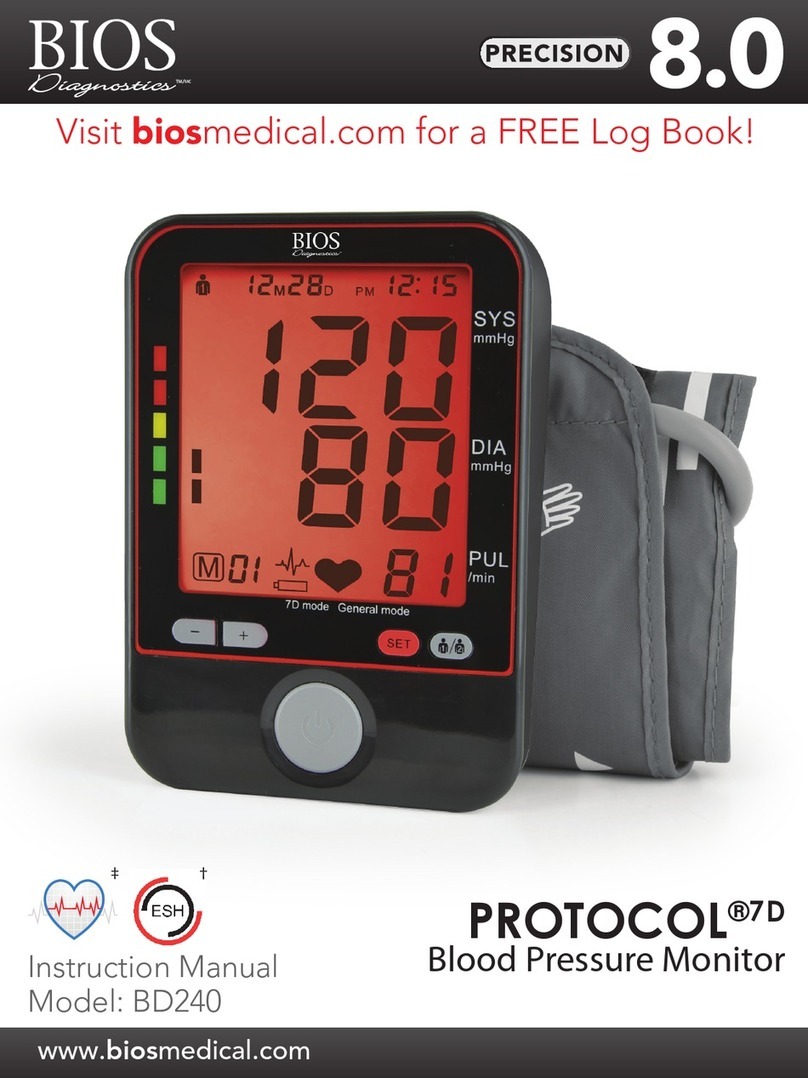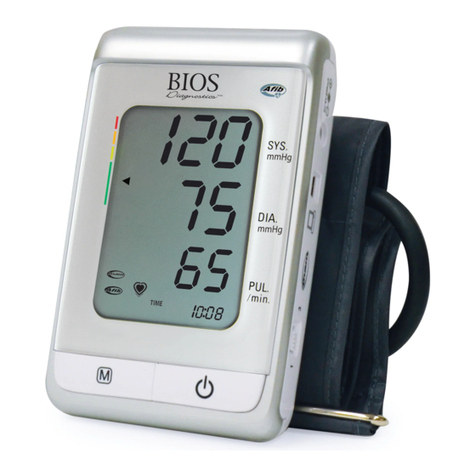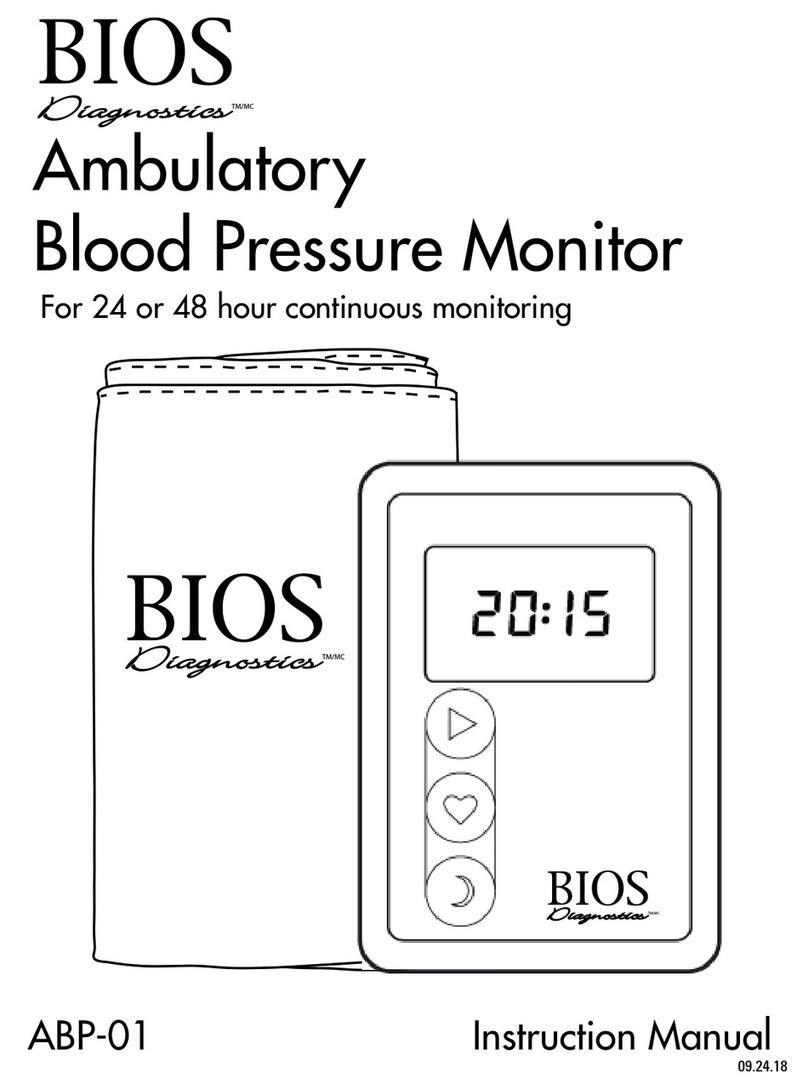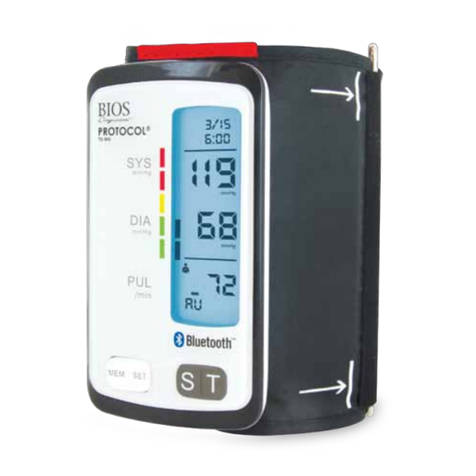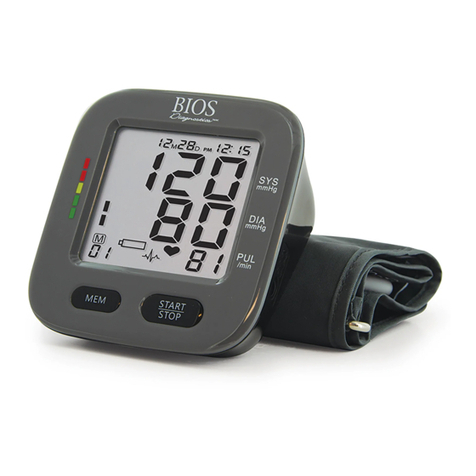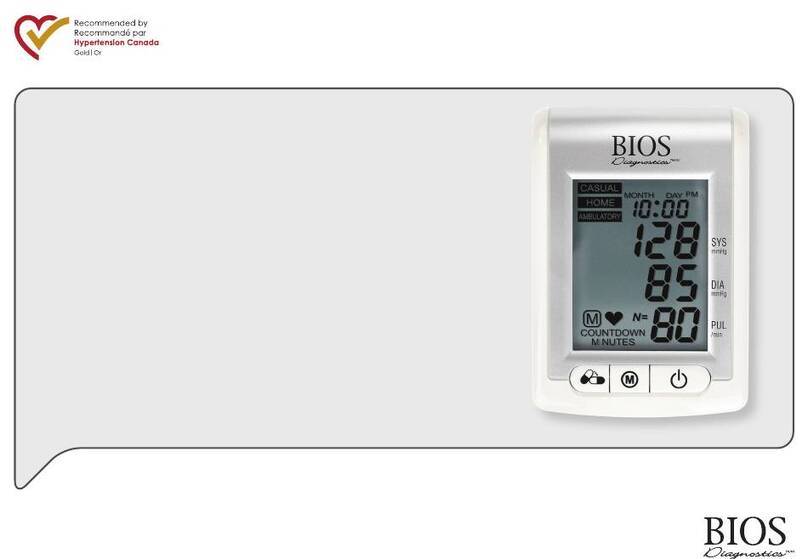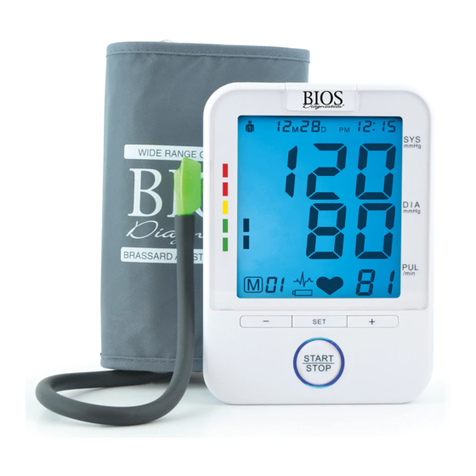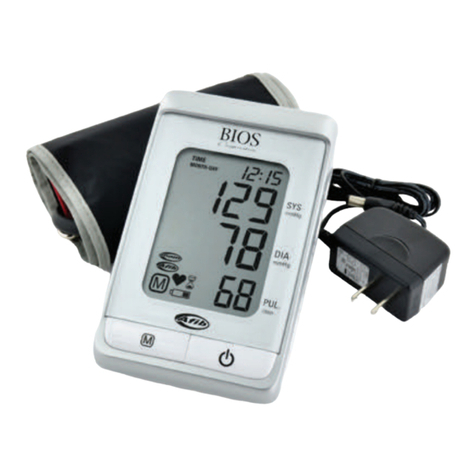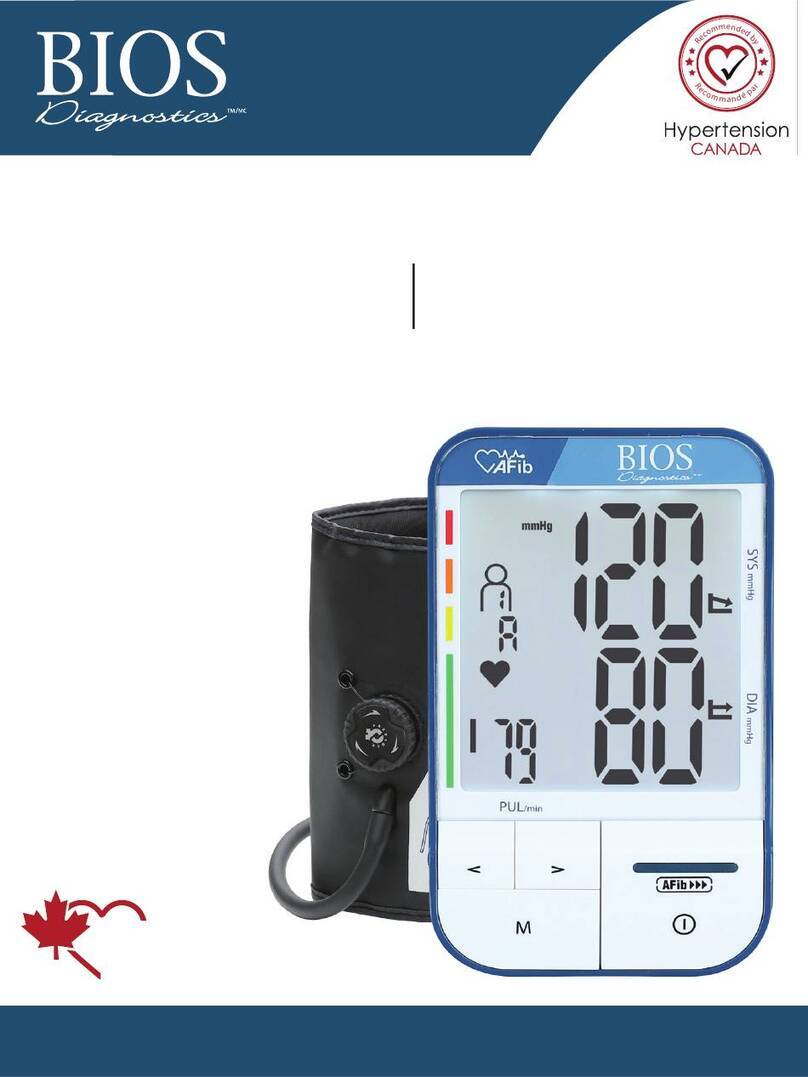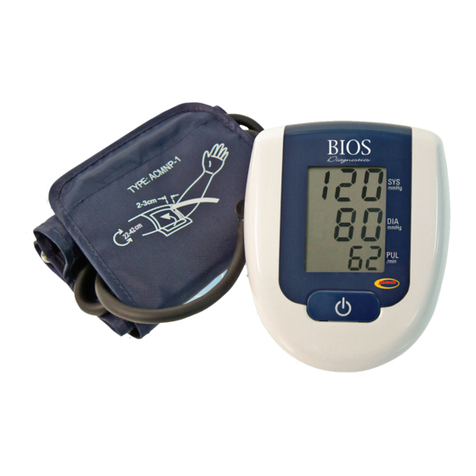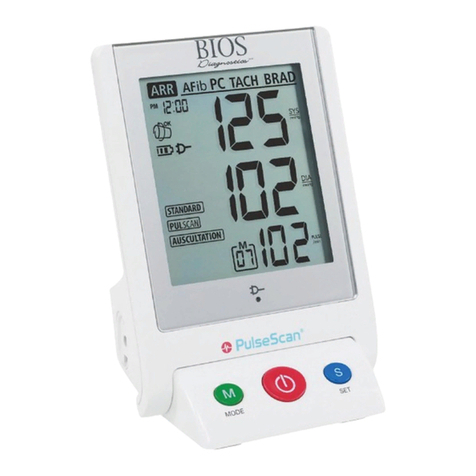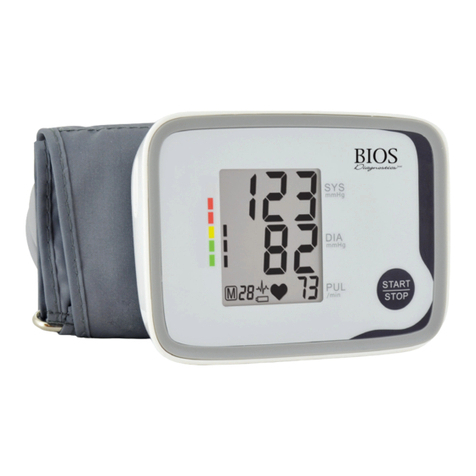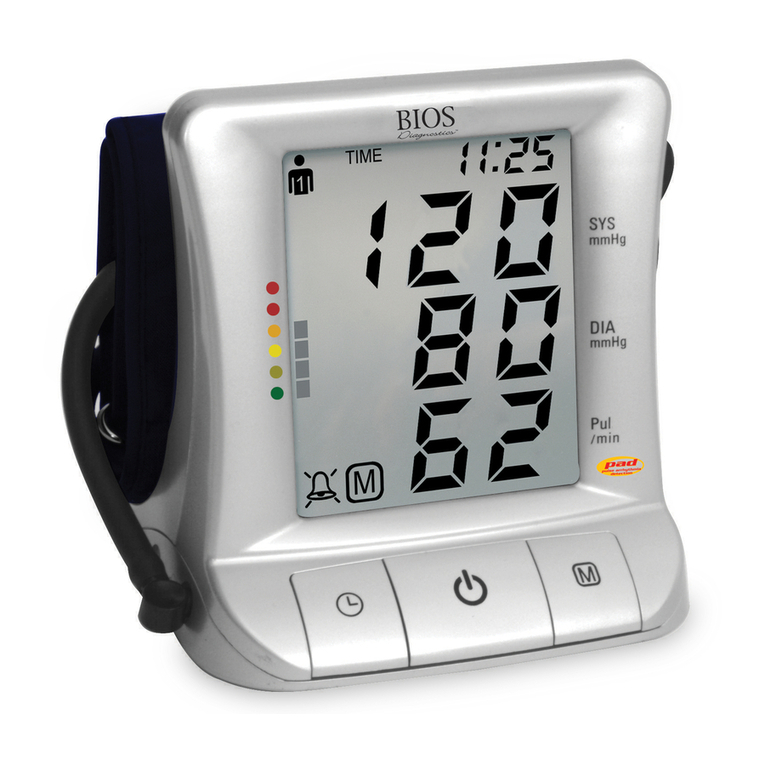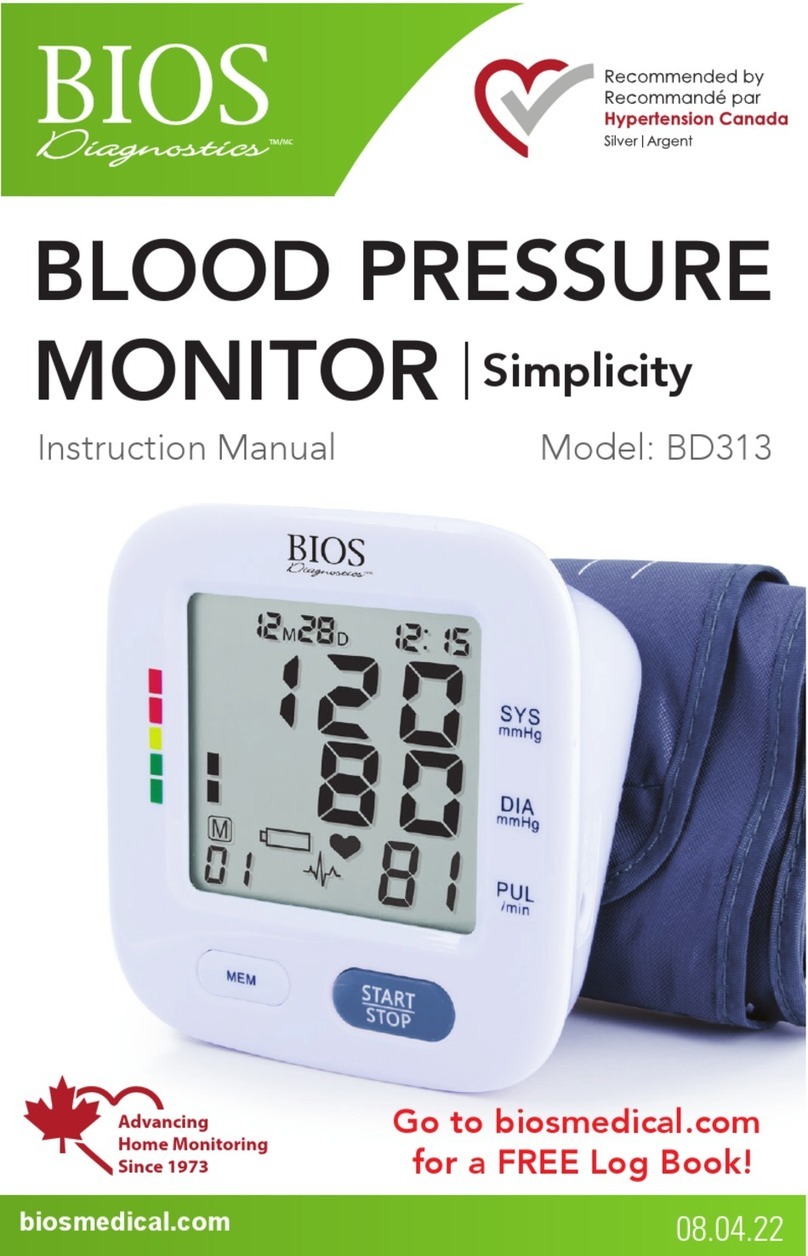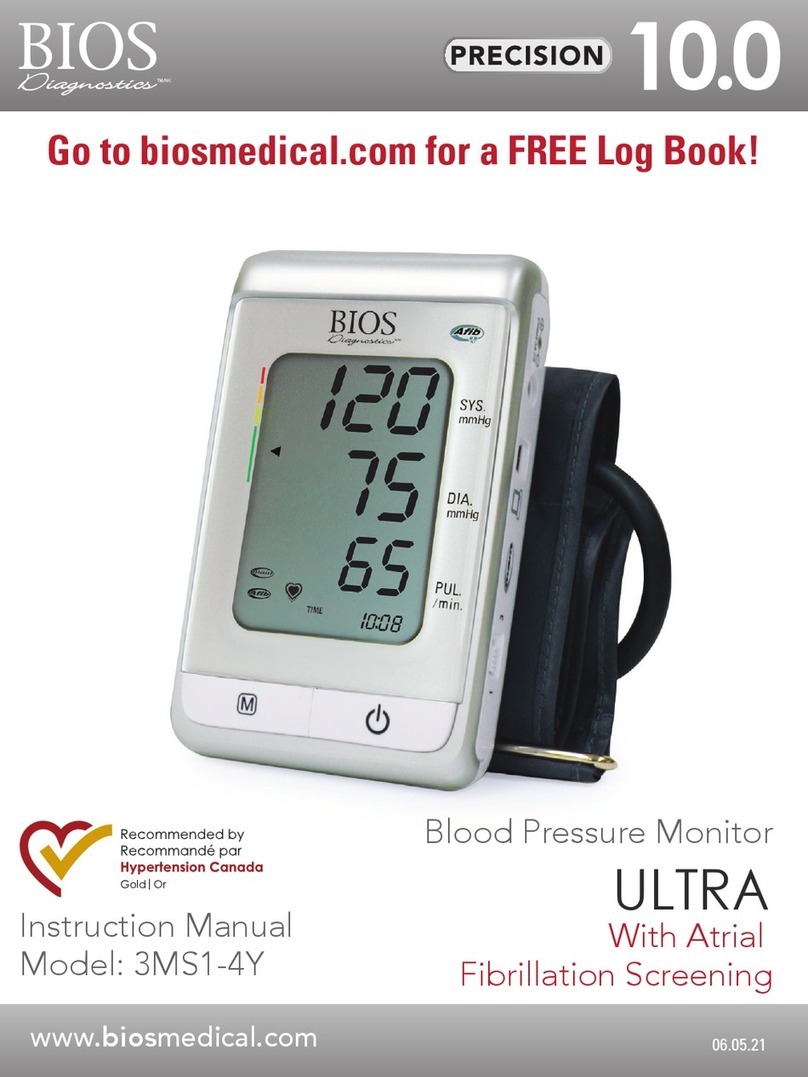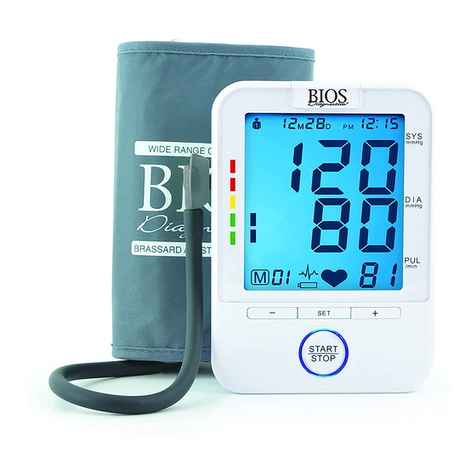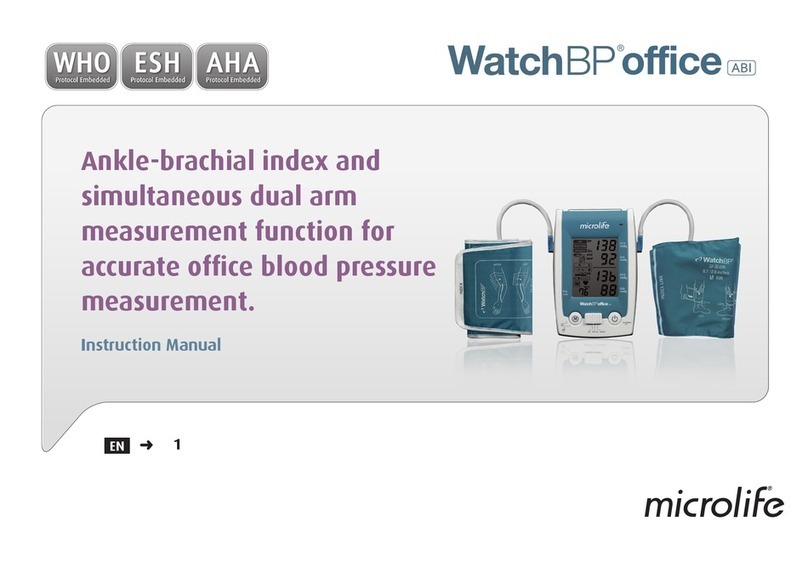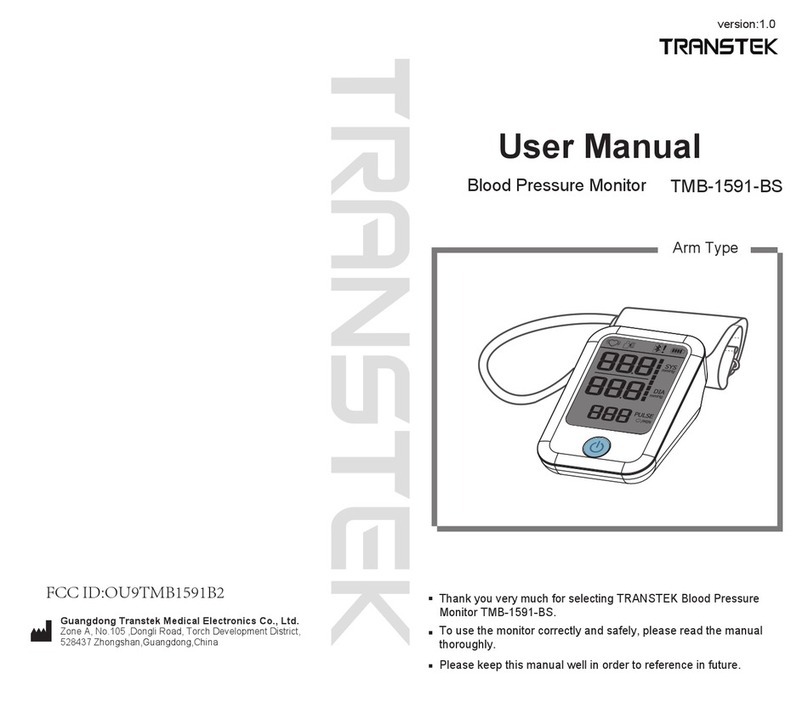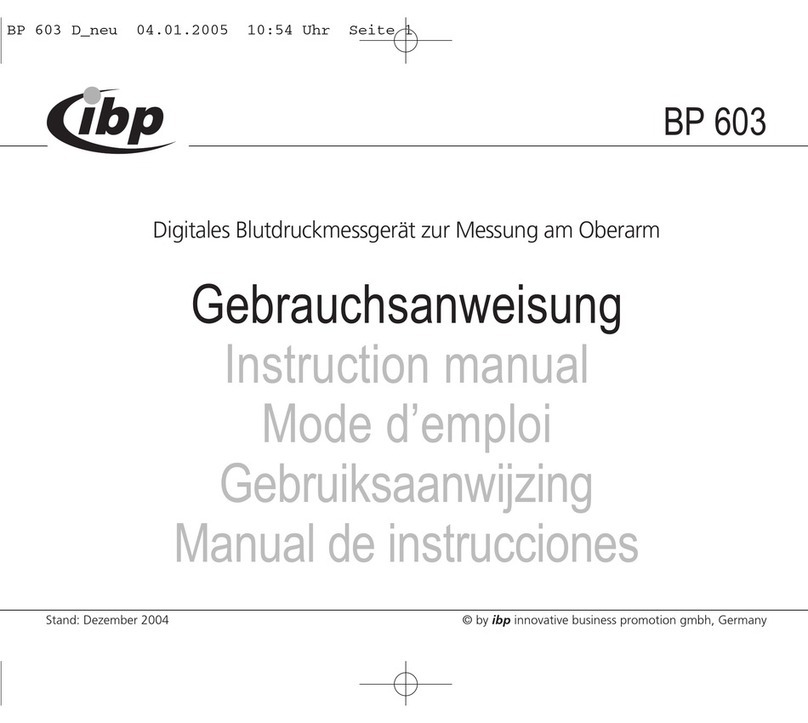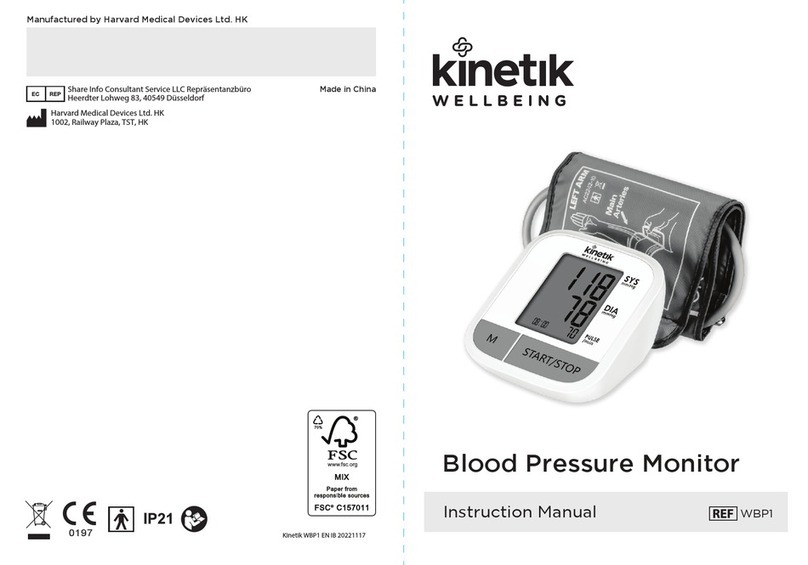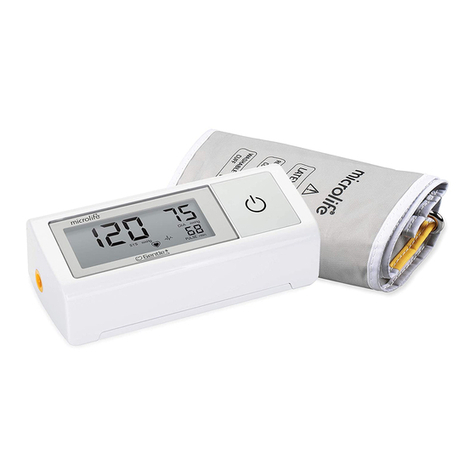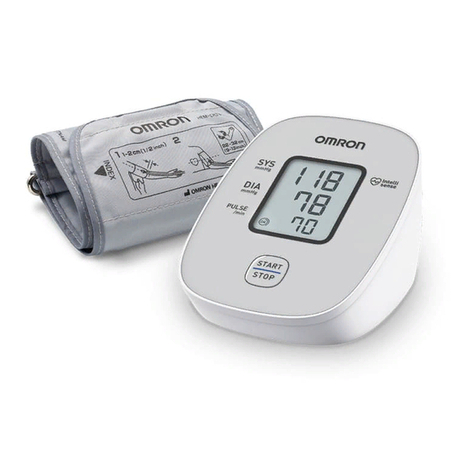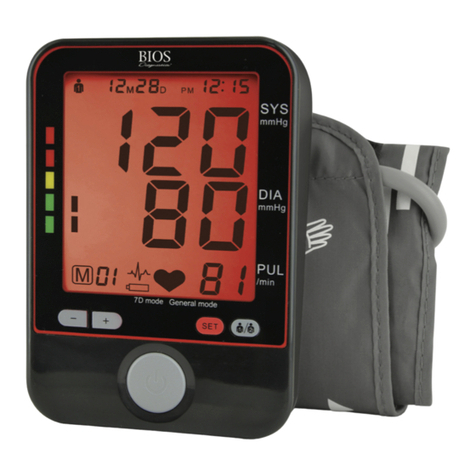
1.2B Care of the Device
For prolonged life of your blood pressure monitor, note the following instructions:
• Do not drop or bang the unit. Prevent sudden jerks, jars, or shocks to the device to prevent damage.
• Do not insert any foreign objects in any device openings or vents.
• Do not disassemble the unit.
• If the unit has been stored at very low or freezing temperatures, allow to reach room temperature before using it.
• Do not store the unit in direct sunlight, high humidity, or in places with a lot of dust.
• Clean the device with a soft dry cloth. Do not use gasoline, thinner or similar solvents. Carefully remove spots on the
cuff with a damp cloth and soap. Do not wash the cuff.
• Do not use the device if you think it is damaged or if anything appears unusual.
• Ensure that children do not use this device unsupervised; some parts are small enough to be swallowed.
• Using the unit in the immediate vicinity of mobile phones, microwave appliances or other devices with strong
electromagnetic elds may result in impaired functioning.
• Do not use this device close to strong electromagnetic elds, such as mobile telephones or radio installations.
Keep a distance from such devices when using this unit.
1.2C Comparing Readings to Other Blood Pressure Devices
Many questions arise when two blood pressure devices are compared in an effort to check accuracy. An accurate
comparison requires repeatable measurements under the same conditions to “reference device” with known accuracy.
Signicant time is required to reduce naturally occurring blood pressure variability during the test. The subject should
be seated comfortably with feet at on the oor, and have rested for 5 minutes before the rst reading to allow blood
pressure levels to stabilize. The patients back, elbow and forearm should be supported, and the middle of the cuff should
be at the level of the right atrium. There should be no talking or moving during the measurement and if comparing to an
aneroid gauge or mercury column, observers should avoid parallax and be careful not to round measurements.
The most accurate way to compare devices is to take two readings at the same time. However, most people and doctor’s
ofces do not have the equipment necessary to measure blood pressure from two devices simultaneously. To take
sequential measurements properly requires a pair of initial measurements to determine the subjects blood pressure
level: rst with the reference equipment, followed by 60 seconds, then with the monitor-under-test. The actual accuracy
test requires three pairs of measurements with 60 seconds between measurements. These measurements are averaged
and a comparison can be made. Since most people tend to relax and their blood pressure falls with subsequent
measurements, following this protocol reduces these natural changes in Blood Pressure levels. The standard technical
error of both consumer and professional devices is normally ±3 mmHg, so a discrepancy of 6 mmHg is acceptable even
when the devices are working within their specications.
Any comparisons without a known “reference device” and not following the procedures described above will yield
unreliable results. In addition, to do an accuracy test properly the reference device must also be tested to a known
reference to conrm its accuracy, prior to being used as the reference for comparisons.
1.2D Calibration
Digital blood pressure monitors do not require regular recalibration, unless the product has been dropped and internal
parts have been damaged. If the unit turns on and does not display an error code, the product is working properly.
In extremely rare cases, the cuff may have developed a pin-hole leak, or the gasket where the cuff connector enters
the monitor may not have a proper seal; both of these leaking air issues will potentially cause errors in accuracy, but
otherwise the product will work accurately without drifting out of calibration.




















